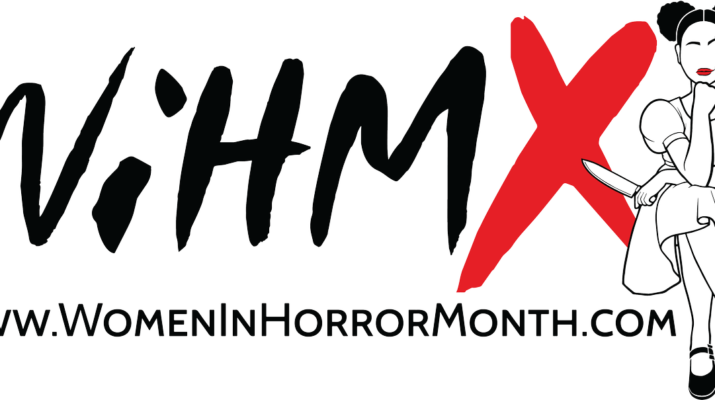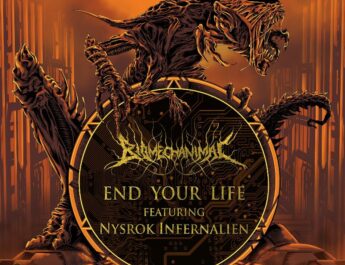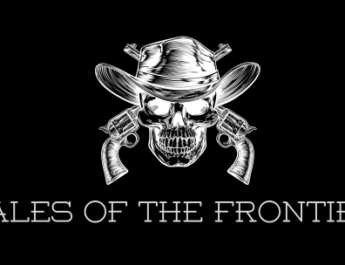As you may know, February is “Women in Horror” month. To celebrate, PromoteHorror.com asked women from different professions if they would like to answer some questions about being a “Woman in Horror,” and more. One of those women, who was kind enough to answer our questions, was writer Xiomara Meyer. Lets see what she said about being a “Woman in Horror”…

-PH: When did you first become a horror fan?
-Xiomara: I think I was 14 when for some reason I spontaneously decided to read Stephen King’s The Shining. I was immediately hooked (to the genre), and ever since then horror narratives of any kind have become a routine part of my life.
As I grew up I realized that, commercially, horror stories have become synonymous with “cheap literature”, and to me, other than genuinely finding beauty in all that is dark and creepy, the impetus to pursue a career in the genre partially stems from a need to prove people wrong and to bring back validity that (I feel) it lost throughout the years.
-PH: Was there a specific moment when you realized that you wanted to go from being a fan of horror to a woman who contributes to the genre, or did it just kind of happen naturally?
-Xiomara: A little of both (which is the most cliché answer in the universe, I know). I’ve always had a fascination for anything of disturbing disposition (books, movies, locations, stories), so I think it was “in me” to begin with. However, in tenth grade we had to complete a so-called project study (essentially to undertake a significant piece of work over an extended period of time), and I chose to write a novel. Because why not.
It was a historical fiction, but heavily loaded with gothic undertones. The discovery that one can potentially trigger fear (this emotion in particular) with the correct words was really appealing to me (I realize now that makes me sound like a psychopath. I’m 51% sure I’m not…).
Of course years later, once I graduated with a bachelor’s in creative writing, I was more experienced and could better appreciate the craft that comes with creating horror (for me the premise is not just to scare – that’s the superficial intention. The true goal, as is with any story, is to present an underlying idea, critique or observation, but to do so without loosing the characterization of the genre. This is easier said than done).
I’m pragmatic by nature, so I like lists and structure and instructions, and I thoroughly believe that although horror is relative (what scares me might not scare you), there is a universal way to induce fear, and it has to do with the evolutionary origin of horror (i.e. we have all survived because our ancestors collectively feared/avoided certain things. The development of fear is a tool for survival – we all share a common ancestor, so we therefor share a common fear. Finding out how to generate it is the tricky bit).
If such approach can be methodized and used in tandem with the incorporation of themes and motifs (the story underneath the story), then I believe the genre will be widely more respected by those who criticise it.
I’d like to think that helping curate a technique for the implementation of such method would be my contribution to the genre.
-PH: What does having a “Women in Horror” month mean to you?
-Xiomara: There is a severe lack of recognition of female artists in the industry. Sorry, let me rephrase: there is a severe lack of confidence that female artists can deliver “horror” (in whichever form) as well as our male counterparts.
In my short-lived experience, (even as a reader, I have to admit) I have read /seen more horror-based art created by men than women (or at the very least created under male- sounding pseudonyms, particularly with newcomers). To put it better, horror created by women is something I find myself purposely seeking out, as it’s not as readily available as horror created by men.
There is a reason why there is a “Women in Horror” month, but no “Men in Horror” month.
Personally, “Women in Horror” month is more than just a time to celebrate the feats of amazingly talented female creationists– it’s a time devoted to bringing attention to the fact that women can be just as scary as men (I know, let the jokes roll), and hopefully in the future the month can be extended to two months, then four, then 12, and then it will no longer be needed.
-PH: Is there a woman in horror who you consider a role model?
-Xiomara: A few.
If you want to stick to the oldies, I’ll go for a long time favourite: Mary Shelley. Not just because she defined social norms by writing about subject matters that women weren’t even supposed to think about, but because the plot of Frankenstein is just damn clever.
But in terms of modern creationists: Katy Towell (author of Childrin R Skary), Amanda Louise Spayd (mixed-media artists and puppet designer for “The Maker”), Margaret Atwood (her dystopian plots are brilliant), Emilie Autumn (not technically horror, but gothic. That counts, or?).
I’m absolutely sure that I’m forgetting many more and that’s going to bug me for a long time now.

-PH: How do you think the role of women in horror has changed over the years?
-Xiomara: Thankfully, the preconceived notion that women are dainty and should stick to less abrasive genres has drastically changed from what it was 200 years ago. I think that with change of conventional norms (and with the rise of voices from all corners of the earth), more and more people are starting to separate creation from creationist, which in this case is a good thing. That is to say, they judge a piece of art for what it’s worth rather than justifying shortcomings on the gender of the artist.
I’m aware that what I’ve written up till now sounds like I’m swinging a massive dagger at the opposite sex whilst screaming “long live misandry!”, but I can assure you that is not the case.
For a long time the Kings and Lovecrafts and Bradburys have reigned supreme in the literary world of horror, and they are fantastic pioneers in their own rights, who deserve their praise. I just find it hard to believe that the problem lies in a lack of female horror writers/creationists; we’re here all right, just that we have to prove our craft much more.
I’d like to say that mentally is changing, and I hope that in the near future we’ll see more projects accredited to female artists.
-PH: What do you think the future holds for women in horror?
-Xiomara: Many of us are pissed off about many things (most of the time rightfully so) and we are no longer tolerating silence. It’s a global movement and change is happening (I’m not talking about the whole #metoo thing – that’s another topic altogether), but about being seen as equals – equally good directors, actresses, writers, painters, musicians, designers, etc. So we’re fighting back harder than before and are harder to de-motivate.
It’s not easy, but it’s certainly gotten easier. I can’t predict the future (if I could, I would probably see people rolling their eyes at how long this whole interview is turning out to be), so I can’t say with certainty that the doors will open up to women in horror and all will be fine with the world.
I can only hope that they will.
-PH: If you could serve a role in horror that you’ve never done, what would it be?
-Xiomara: Do you mean field-wise? I’d love to try my hand at animation. But takes a lot of patience, and skill, so…
-PH: Who is your favorite final girl, and favorite female villain?
-Xiomara: Final girl: Ellen Ripley, from Alien. No weak-willed, naïve, air-headed survivor but a no bs, cool, determined-to-survive protagonist.
Villain: Annie Wilkes, from Misery. Don’t know how much of a villain you would consider her, but I would not want to be in a room with her.

-PH: Being that this is PromoteHorror, please feel free to plug your current/next horror project.
-Xiomara: Not specifically a horror story (although the planning is turning out to be an absolute nightmare), but do go and check out “The Struggling Life of An Artist”, a comedy play written and performed by myself (Xiomara Meyer) and actress Tamalynne Grant. Inspired by real events, it follows the story of an aspiring horror writer who is told her book will be published only if she agrees to use a male pseudonym and an aspiring actress who is told she will get the lead in a film if she agrees to be sexier.
We’ll be performing at the Edinburgh Fringe Festival 2019, so feel free to follow us on Twitter/Insta/Facebook (@HittingHeadsProductions), or by visiting http://www.hittingheadsproductions.com for updates (and the occasional cry for help when all is falling apart and we don’t know what we’re getting ourselves into and the budget is tight and all is going to hell).
We would like to thank Xiomara Meyer for taking the time to answer our questions, but more importantly for her contribution to horror!



